While we’re currently in an era of comparatively low gas prices, the last few decades have seen much volatility in the oil market. This can hit the hip pocket hard, particularly for those driving thirstier vehicles. Thankfully, modifications can help squeeze a few extra miles out of each gallon of dinosaur juice if you know what you’re doing.
The art of striving for the best fuel economy is known as hypermiling, and involves a broad spectrum of tricks and techniques to get the most out of a drop of fuel. Let’s dive in to how you can build a more efficient cruiser for getting around town.
Step 1: Know Thine Enemy
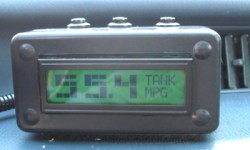
If you want to improve your fuel economy, the first step is to measure it. Without accurate measurement, it’s impossible to quantify any gains made or optimise for the best performance. For those with modern cars, it’s likely that there’s already a trip computer built into the dash. Using this to track your fuel economy is the easiest solution. Instantaneous modes are useful to help improve driving habits, while average modes are great for determining the car’s economy over time.
However, many older vehicles don’t have such features installed as stock. Thankfully, there’s a few ways to work around this. For those driving post-1996 vehicles outfitted with an OBD-II port, tools like Kiwi or Scangauge can often track fuel economy. Failing this, most fuel injected cars can be fitted with a device like the MPGuino that monitors fuel injection to calculate consumption. Fundamentally, all of these tools involve tracking the amount of fuel used per distance travelled. Factory tools and OBD-II gauges do it by using the car’s standard hardware, while the MPGuino splices in to speedometer signals and injector triggers to do the same thing with an Arduino. If you do decide to install a custom device, make sure you calibrate it properly, else your figures won’t bear much resemblance to what’s going on in reality.
Of course, as long as your car has a working odometer and a fuel tank that doesn’t leak, there’s always the pen-and-paper method. Simply reset the trip odometer to zero after filling the tank to the brim. Then, when refilling the tank, fill all the way to the top, and divide the miles driven by the gallons of fuel added back to the tank. This isn’t the most accurate method, as the nature of gas station pumps and automotive fuel tanks mean that tanks aren’t always accurately filled to the brim, due to air pockets and devices used to prevent overfilling. Despite this, it’s a handy way of getting some ballpark figures of your car’s performance over time.
With a good grasp on your car’s fuel numbers, it’s also important to test your mods scientifically. Throwing on some “improvements” and doing a lap of the block while reading the instantaneous MPG readout won’t cut it. Ideally, it’s best to compare several tanks worth of average MPG readings with the car’s established baseline before modification. Routes, grades of fuel, and other factors should be kept as similar as possible if you want the ultimate bragging rights amongst the hypermiling set.
Step 2: Mods
Now that you know what your car is capable of, it’s time to consider modifications to eke a few more yards out of every drop of fuel. The range of modifications vary from the simple and easy to the extreme, with practicality concerns meaning some will be out of reach for the average driver.
Aero – Smooth And Sleek

One of the biggest areas that can improve fuel economy is improving the aerodynamics of a car. Unlike our previous article, which discussed improving aerodynamics for more grip by increasing downforce, the focus here is to reduce drag. Drag increases with the square of velocity. This means that the faster you travel, the more fuel you need to use to overcome the drag on the vehicle. Mods in this area will have the greatest effect at high speeds, such as during highway driving. It’s important to note that any mods that significantly change the aerodynamic properties of the vehicle may have an adverse affect on handling, so tread carefully. Also, it pays to remember that some vehicles may already have incredibly low drag despite the way they look. For example, it may not appear to be particularly streamlined, but the latest Mercedes A-Class is a leader in low-drag design. Improving on such a design would likely be difficult to impossible without the aid of a windtunnel and 20-30 world-class engineers.
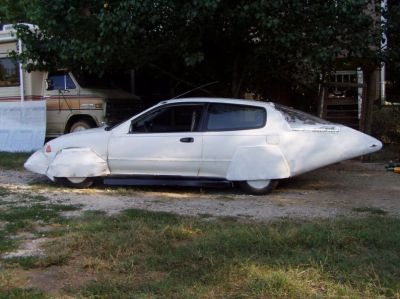
At the more extreme end, body mods can get serious, and seriously impractical. Many hypermilers get deep into structural work with materials like coroplast and aluminium, creating “boat tails” to smooth airflow and reduce MPG. These often compromise the use of rear storage, but can have major effects towards reducing drag. Undertray modifications can also help, at the risk of winding up with your craft project tangled around a driveshaft or suspension arm. Some even go so far as to fit wheel shrouds to further improve their car’s sleek profile.
Weight
The heavier a car is, the more fuel is needed to accelerate that mass up to speed. Thus, reducing a car’s weight is a great way to improve fuel efficiency, with the EPA estimating that removing 100lbs of weight can improve economy by 1-2% on average.
There are plenty of ways to save weight in the average car, particularly for the creatively minded. For example, if you have no friends, there’s no reason to be carrying around all 5 seats in your family wagon. Eliminating the rear bench and front passenger seat can easily save 100 lbs or more, netting a serious gain for precisely zero money. More extreme methods can involve driving without a spare tire, or removing carpets and sound deadening. For the truly dedicated, glass windows can be replaced with lighter lexan panels, and heavy stock wheels can be swapped out for lightweight aftermarket ones.
Tyres
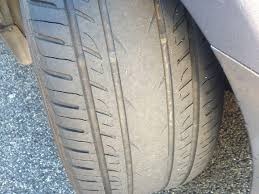
While not the most exciting modification one can make, tyres nevertheless have a role to play in fuel economy. Overcoming rolling resistance takes fuel, so switching to a lower-rolling resistance tyre can help. For those looking for more, switching to a skinnier tyre than standard can also help, though there are risks here around changing the handling characteristics of the vehicle. Making drastic changes can be dangerous, so often it’s better to lean on the side of caution and just fit a nice set of eco-focused tyres on an appropriately sized wheel.
Additionally, increasing tyre pressure can help. By adding more air to the tyre, it reduces the size of the contact patch. This reduces the rolling resistance, thus improving fuel economy. However, it also reduces grip, and can lead to blowouts and other disastrous consequences. Such measures are even more dangerous in the wet. As a bonus, in modern cars, it will throw all kinds of errors and warnings from your tyre-pressure monitoring system.
Engine
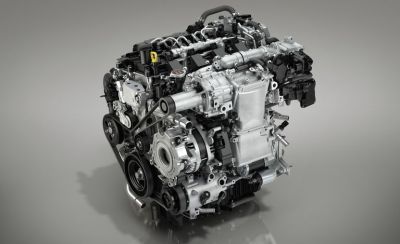
The engine is perhaps the hardest place to make significant fuel economy gains as a home gamer. Car companies invest millions of dollars on developing engines, with a strong focus on fuel economy and efficiency. This is an area where cheap one-size-fits-all eBay parts aren’t going to improve on a bespoke designed OEM part. This goes for tuning as well — a day down at your neighbourhood dyno isn’t going to net a more efficient tune than the one Honda spent years testing in all atmospheric conditions imaginable.
This isn’t to say there is never anything left on the table, however. It just requires a very intelligent consideration of the engine as a whole, and a realistic approach to what is possible. One place where manufacturers do have to compromise is price. A budget economy car from the mid-1990s may have a restrictive exhaust, which was chosen for manufacturing cost over outright efficiency. Swapping this out for a better-flowing part may net a few extra horsepower, and allow the engine to breathe more freely, improving efficiency. Oftentimes, a clear look at where costs were cut will find the handful of areas where a stock motor might find a few efficiency gains. However, it can be difficult to make improvements here without spending more than you’ll make back in savings on gas.
Conclusion
Hypermiling is a great way to save a few bucks, but with gas prices at historic lows and electric cars on the market, it’s not the big deal it was perhaps a decade ago. Many now dive into the world of precise driving techniques and advanced modifications not purely for the savings at the pump, but the sheer engineering challenge. While we’re starting to see the sun set on gasoline technology, gains remain to be had, and there will always be hackers looking to wring every last bit of energy out of each drop of gasoline. To those who wrench in pursuit of this goal, we salute you!

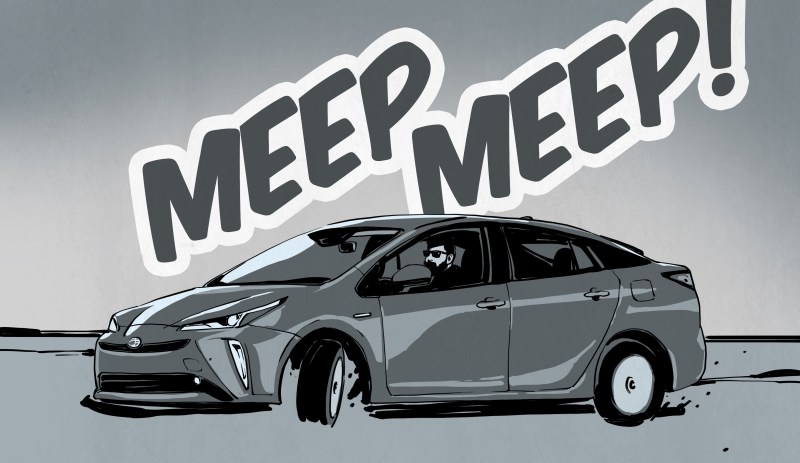














The first thing is lower your accelararion as that’s what takes the most fuel and use breaks only to a minimum.
Measuring the consumption is easy by just writedown the ,total, drived miles (or kilo meters) number the car has run and the number of fuel (gallons or liters) you filled. By doing this you get a better inside? (figure) as the more times you do that –but never forget the fuel counts– forgetting the total drived has no inpact as that number on climbs.
Have done that on my old (1984) Ford Capri 16S and i got a 11.2 km/liter, while the garage said this is inpossible it should be around 8 km/liter, so i showed then the list with all the numbers.
For enerery consumption see this video https://www.youtube.com/watch?v=_pcjOCnfEN8
I’ve kept track of every fill-up I’ve put into my personal vehicles (and now my wife’s) since 1995 and put them into a spread sheet (1 workbook / vehicle) I’m not sure I still have it, but I kept track of my Datsun diesel consumption before that in a small notebook.
In regard to the in-dash MPG reading of my wife’s 2011 Subaru…
Let’s just say it is a_bit optimistic.
I remember in the 70’s Saab or Volvo or one of those other small foreign car companies actually did a study of this and they concluded that since the engine operates most efficiently at full throttle the best strategy was to floor it until you got up to cruising speed.
For obvious reasons this report was not widely distributed. I’ve often wondered if it’s really true, though.
Wasn’t that a 2-stroke engine?
Might have been, but seems unlikely that a production car ca 1970’s would be 2-stroke. My recollection of the 70’s is pretty hazy :-)
Yes quite of the number of the early Saabs were 2 stroke.
It’s true that a gasoline engine is more efficient at higher cylinder pressures, so it would seem that accelerating harder, for less time up to the same speed would save gas. That goes against conventional wisdom, and when I’ve tested this theory, it turns out that you do get better mileage with more gentle acceleration. My best semi-scientific guess is that drivetrain losses increase at higher loads, eating up the gains from the increased engine efficiency. I’d love to see if someone else has a better take on this…
if you look into it further, cars run stoic at part throttle (and this obv includes light acceleration) but richer than stoic under high load. So the engine will burn more fuel per unit air under high load. so will consume more fuel.
All that said, if your into fuel efficiency GET A DIESEL. yes i am aware of the current environmental bias against them, but in the UK a fairly modern ~10 year old diesel with 150hp on a city commute will get 45-55mpg. a 150hp gasoline will get 28-35mpg. and on the gasoline engines this mpg will vary wildly with driving style, diesels are quite a bit more stable . I drive a 3.0d bmw. heavily modified with around 300hp. gets 40mpg around town and over 50 on a run. show me a gasoline vehicle that can seat 5 comfortably, has 300hp and gets over 20mpg with my lead foot. I also own a 1.4 diesel ford fiesta, its impossible to get it to do less than 60mpg. you just cant. my wifes 1.6 diesel golf averages 52mpg on her slow, stop-start commute. obviously I do not count the 6+ litre diesels that roll coal stateside, I can only comment on European vehicles. I guess fuel prices in the USA never got high enough for them to embrace small diesels.
I think it’s the filth and stench that turn off a lot of Americans. My wife can’t handle the fumes (she’s sensitive). I spent time in one of those diesel-loving euro cities, and there was a film of black powder on everything. My clothes had never been that dirty in my life! And I’ve lived on a farm for a while, so that’s saying a lot.
We’d never own a diesel as a daily driver due to those reasons.
yes, somehow the diesel is emitting some irritating fumes, i’ve just noticed it, there was a small personal van on the street and it was stopped with the engine running and my throat get irritated, i can only imagine what the people felt sitting in the restaurant what was located outside :)
During the gas crisis of the 1970s, the US car makers made some really bad diesel cars, and that soured the US population on diesels for decades. And generally – with a few exceptions – the good diesels aren’t available in the US.
> the good diesels aren’t available in the US
Manufacturers learnt that good diesel engines wouldn’t run well and their filtration would plug up, with the low quality diesel fuel. With warranties, no point in bringing those engines here.
Cars run rich at full load. Also, rolling resistance is a function of torque. More torque, more rolling resistance. Full-time AWD vehicles recoup some of the losses from the extra drivetrain components because of this.
> The first thing is lower your acceleration
Another is lower your speed.
As your speed goes up, so does the drag you’re burning fuel to fight.
I had a VW Golf that sipped fuel at 40 kph (~25 mph). Amazing how far I could go at 40 kph with the needle on “empty”. Higher speeds? Better be a station soon.
At 60 kph (call it 40 mph), fuel use was up meaningfully, and more so at 80 kph (50 mph). Above 80 kph, fuel use went up significantly, and crazy if the windows were down.
> The first thing is lower your acceleration
Another is: conserve your momentum.
You’ve paid for the fuel you burnt to get that momentum. There’s don’t throw it away by “racing to the red light”. Now take that further.
The Challenge is Timing!
When you see a light turn red ahead of you, brake hard and fast – take your momentum hit up front. Then coast, not to, but towards the light. The goal is to time it so you’re arriving with the greatest possible speed (conserved momentum) at the light immediately after the light turned green, so you can proceed from the light starting from that conserved speed (momentum). (Or arriving at the back of the line of vehicles stopped at the light as they’ve starting proceeding through the green light.)
Of course, there has to be enough distance to the light so the speed will be enough to be worthwhile, and watch out for traffic. Timing momentum conservation is difficult where you’re not familiar with the lights timing, but some lights have crosswalk countdowns that give you a clue and allow you to brake a bit more to adjust your arrival timing.
My 70s hillman hunter wagons averaged 12km/ litre (without trailer) over 1mil km.
My car is a LPG/gasoline but without fuel economy on the dashboard, any idea how to get such number?
It as it’s an injection with OBD-II (Kalos/Aveo)
The Scangauge could probably work here, but you may need to contact them as the fuel economy calculations are likely to work differently on LPG – particularly if the LPG is itself an aftermarket conversion. It’s likely you would get some sort of economy numbers on LPG that would be useful but very distorted.
I’m thinking having a scale to measure the weight of the LPG consumed would be essential, if not practical.
Interesting to know that there are places where LPG is used on cars. Let me explain: here in Brazil, we had LPG “conversion kits” on cars (circa 80s), that were basically a “leaking tube” into the intake, with constant flow, and the revs were only controlled by the amount of air you let in. Later (about 15 or 20 years ago) it was prohibited due to several kaboom-ish incidents with the common canisters used in the trunk – the same used on kitchens. The new system now uses GNV (portuguese for “vehicular natural gas”), which is basically natural gas in specific canisters that can be refilled in-car.
Those new systems evolved just like the usual fuel injection: started as constant flow, then a single computer-controlled injection valve, and now a full parallel system with one injector per cylinder, installed parallel to the original fuel injectors. Basically, a second fuel injection system that operates independently from the one that comes stock – shutting down the original system just after the engine start with the original fuel (gasoline/ethanol/both).
As they are fully independent systems, they don’t interact with the original OBD/CANBus – some cars still “think” they are spraying fuel, thus giving false consumption readings through OBD.
“shutting down the original system just after the engine start with the original fuel (gasoline/ethanol/both). ”
A number of older diesel farm tractors (circa 1950) used gasoline to start the engine when cold and the driver switched to diesel once it warmed up.
I am NOT referring to the gasoline “pony engine” that was used to start some tractors about the same era.
The only tractors i know of that switched fuel like that started on petrol and changed over to tvo.(tractor vaporising oil) not diesel. diesel and petrol engines are generally incompatible, not just because compression ratios would need to be modifiied but because petrol is a solvent and diesel is self lubricating.
For example, the Farmall gas start diesel…
https://www.dieselworldmag.com/diesel-engines/tractor-talk-1941-farmall-md-diesel/
There was a fuel called tractor fuel especially around the 1940s and earlier and some tractors such as John Deere model a, b, and g did have a smaller tank for gasoline and a larger tank for a tractor fuel. Tractor fuel was not diesel fuel, and the engines all ran by spark ignition not compression ignition. By the time that I was driving tractors in the 70s the tractor fuel was either entirely non-existent or hard to come by and we always just ran gasoline.
It depend on the type of car and if is aftermarket or not. Some modern methane powered cars have a ECU that understands both gasoline and methane, and could do neat tricks like start the engine directly on methane and in case the temperature is low use a bit of gasoline, instead of simply look at the water temperature to switch. LPG on the other hand is a mix of propane and butane and due the different calorific power changing fuel pump and hence the gas mix will change the fuel consumption. LPG ECU has to figure out what the hell is stored in the tank.
Speaking of that I had an LPG car and I given up because some criminal sold dirty LPG that clogged the injectors and causing expensive repairs, and the bad thing is that unlike the water on diesel fuel you can’t be sure if the culprit is the latest fuel station.
Those systems are called CNG outside Brazil. Interestingly, regulations for those CNG cars (converted or factory) are far more strict. 1yo CNG car without MOT testing will get tolled but 25yo gas/ethanol car with bald tires/faded brakes may get away.
Licensing in my region still costs more than gas car (no tax exemptions for clean fuel).
offtopic> I wonder how challenging would it be to have a megasquirt+cng injection.
Don’t forget to adjust the nut behind the wheel first and foremost. A lot of particular driving habits can make a difference – it’s rather interesting seeing how much my current car’s MPG average drops like a rock if I go through a drive-through, for example.
One note about tuning – a dyno shop may, in fact, pull off slightly better mpg numbers by not working under the same constraints as an OEM. For example, they might turn down the air/fuel ratio and increase the timing under cruising to get a bit better mileage but at the cost of a massive increase in oxides of nitrogen. If you’re trying to get more mileage for environmental reasons (you’re probably not going to recover the cost of a dyno session from increased fuel economy unless this you’re a commercial driver), that’s a big nope.
“you’re probably not going to recover the cost of a dyno session from increased fuel economy”
I bought a streamlined topper for my Datsun Diesel 720 (pickup) after I’d been keeping track of its fuel consumption for a few years. I then compared the cost of the topper ($200 on Closeout) versus the fuel savings (not accounting for fuel price increases that occurred) and figured I needed to drive it to 200K miles to break even. I gave the pickup away at 212K miles because I didn’t want to replace the piston rings. (Sometimes I wish I had replaced them).
Driving style is the biggest win by far. Look ahead and read the road. Don’t use cruise control. Brake as little as possible. You not only save on fuel, but wear and tear too. My last car was still on its first set of brake pads at 104k miles (then someone wrote it off)
+1
Letting the car slow going uphill and speed up downhill saves massive amounts of fuel.
I have learned in the army, as a oversize driver (3.6 x 22 meters about 70 tons) that you *never* go faster downhill than the speed what you chould get going up. Have learned that the hard way when the trailor took the outer curve (normally it’s always the inner) by going downhill, i didn’t see it at the time but my co-driver did and showed me on the way back as i had takeout the gardrail over more then 100 meters. Then i did understand what they meaned by saying max down must be equal to max up.!
I have a 2015 Ford C-Max and on a trip to Oklahoma from Nebraska I did notice when I got into hillier sections if I just hit the decrease speed button on the cruise control at the crest of the hill it would go a good long way on electric at 75 miles an hour even extending part way up the next hill. Even so my 2008 Focus got better gas mileage than my hybrid, on this trip we were driving it to Oklahoma City to give it away. I’m sure if I was driving 60 or 65 it would have got a lot better mileage.
1st and foremost, a capable tuner with a dyno actually *tunes* the damn thing, something the OEM can’t afford to do because of the time it takes (and the fact the engine needs to be run in), they just copy-paste the standard settings they developed for that particular configuration, which by nature have some reserve in most parameters.
Messing with the fuel-air ratio will not get you very far, mostly because the emission regulation systems need precise control over it and if bork those, you will fail inspections in many places.
What will make a difference is ignition timing. Fuel quality, sparkplugs, crap in the cylinder/on the piston/top of the combustion chamber…all this seriously affects just how aggressive you can be with the timing.
Some GDI engines are rumored to be sensitive to how the injector is rotated – one of the sprays comes close to the spark plug, so you get better ignition.
Your daily driver is a WHAT???
B^)
https://pl.wikipedia.org/wiki/FS_Lublin
About the dino session: in 1995, the Fiat Brazilian subsidiary scored a big marketing deal in Brazil. Their “new” Fiat Uno Mille – the BR version of the Fiat Panda – was powered by a 1.0 liter engine with fuel injection, considered the most economic car in the market. Surprisingly, it also had superior performance and power on the road when compared to the 1.0 liter rivals.
Long story short, Fiat made some black magic with the fuel injection, that detected when it was running on simulated environments like a dino and reduced the engine power and consumption. When free in the wild, the engine got some extra HP and drank a little more. Sort of an ancient dieselgate, but using gasoline and without all the environmental concern.
And yes, Fiat got a fine of about 3.9 million Brazilian Real for this (20 million in today’s BRL). Just didn’t got all that press attention at the time.
Literally every manufacturer did this. The guys who do ECU tuning have said that almost as long as EFI has existed, manufacturers have been pulling this nonsense. The proof is in the pudding – the ROMs have more tables than can be explained otherwise. The extra table is the “oh shit, we’re on a dyno” table and if you’re good at disassembly, you can see the detection code.
This is how many of the tuners implement features like switchable tunes, like a high-boost normal profile and a “valet” mode or “pass my annual emissions test” mode. They were piggybacking off the code used to cheat on the EPA driving and dyno tests.
Ever wonder why it is that your ECU is capable of detecting a magical sequence of pushing the defroster button X number of times followed by wiggling the turn signal stalk four times, etc?
Just install a Brock energy polariser.
For lowest gas usage, follow this one tip: Don’t drive! :-)
I drove a 1976 Dodge Maxivan, soecialnordered w a 2.71 rear and a 360, (an actual truck engine w rotating valves.) This effectively made it a 318. Saldy they’d not sell it w a 4/speed stick, until.a.year later. The 3 speed non-locking automatic did 120mph in 2nd.
I added a Hawk Computor to it in 1980. It was great. Told me the mog et al. Going south to work I could do 80 if need be and in heavy traffic returning in the PM, 45, but was bucking a PM southerly headwind. 80 S or 45 N yielded 16-18mpg.
Apparently NASA did a study with booted wheelwells, a magazine reported. The mag used 2 simple sheets of 5×8 aluminum, one longitudinally between the front wheeks and the other transversly and got 16% better terminal velocity on their test hill.
How about an article now on the slightly more costly OBD dongles/puters that allow programming to leanness etc…?
Sadly, here in Pennsylvania, virtually NO drivers know about a law passed years ago known as PA RED LIGHT LAW…..
Some lights have magnetic sensors, if they work and you stop on the white line, you will get a Green light in about 15 seconds, if nothing happens, and the coast is clear, you can proceed straight thru a Red light!!! Done it 100’s of time’s ain’t got a ticket yet
Sounds super dangerous, I did a little reading… they don’t specify a time limit. It seems the law was put into place for motorcycles that don’t trigger the lights to change however it applies to all vehicles. The law is written in a way that they could still ticket you and you would have to prove that you thought the light was malfunctioning. I ride a motorcycle and have had this happen to me a few times, where I live going through the red is a $500 fine.
Driving these days isn’t a zero risk activity. Our town tried setting up a roundabout with orange cones, but it didn’t work out too well, because several cars hit them,[which proves that some drivers are distracted], and the town dismantled it.
“MPG numbers in the 70s”: too difficult to mention simultaneously that this corresponds to about 3.0-3.2 l/100km, as the measurement in some parts of the world are.
Lubricating the tyres so they glide more smoothly over the road should help. As would unplugging the fuel injectors.
Several cars do cylinder shutdown like this
Oh I know. But meant pull all the wires. No part way measures here :O)
This would be an interesting DIY hack, to add cutoff relays to the fuel injectors and see if you can cruise on only some cylinders getting fuel. (I think it’s likely bad for the engine: I suspect it’ll set off the knock detector and the engine will start reducing the timing, but it’d be interesting to try.)
Reminds me of shifting into neutral on the older automatics that didn’t automatically go into neutral when not accelerating or braking.
most however also disable valves for said cylinders, as pumping air into your exhaust costs a lot of energy…
Some close the valves during compression and exhaust with no fuel and no spark so at least the compression energy is not fully lost as it pushes back on the piston like a spring
I’ve read that too!
And drawing in and expelling air that isn’t going to be “combusted” takes more energy than the closed valve scenario.
One of the reasons I’d like to see more extrusion of sheets open source methods for recycling HDPE and other plastics effectively, is for use in under pan skirt or skin fab for lowering the drag on the underside of a vehicle and still be reliable and durable. I supposed a mold can be made cost effectively also… though seems easier to have the sheet, have the recycled material claim and then form with a cheap wood form to shape and even punch holes in the panel. Then there is the capability of roofing panels or other panels… and that’s a whole nother paradigm of thinking. Definitely not a light… sleek solution as maybe aluminum… though seems a way.
I was just reminded of the Polywall Peel and Stick… that… on the other hand… reminds me that maybe to look into for like tape, lining under panels. Maybe another market for the recycling also?
There is “that guy” who used old corroplast political signs to streamline the undercarriage and wheel wells of his Ford pickup.
(I tried to find the source of where I read about “that guy” a month or two ago, and came up empty. Damn oil companies probably had his information deleted! B^) )
I’ve seen a boat version that comes to mind and another that was sponsored by an oil company that comes to mind. Don’t know about the Ford pickup offhand. Here are a few with a Google search, just select images to view:
https://www.google.com/search?q=hypermiling+truck
I’m like seriously wondering how the polywall peel and stick will adhere to the panels on the Prius? The few times I’ve been underneath I’m confident the drag can be lowered since doesn’t seem optimally designed. I’d like to do the same on the Dodge Ram when I get around to fabricating parts. Currently working on the mods to perform cost effective MIG aluminum welding and TIG spot welding pre MIG runs. Thinking other than the walk through cab and bed mods, the battery holder and some storage hinges… most the fab work will be aluminum with some foam and carbon fiber for certain shapes.
It’s been done, and studied. For ICE engines, the issue is the engine bay relies upon negative pressure from the underflow to pull air out of the engine bay so it can come in the front grill. Block the entire bottom of the engine bay and you’ll toast the engine. The tests shows you could smooth the front ___ % of the engine bay, leave a gap for the underflow to suck air out, and then smooth the remained of the vehicle.
I can’t remember the source(s).
Anyone ever heard of spark plug indexing? The idea is have the spark plugs final position to be at the optimal angle in the combustion chamber. My local auto parts store don’t have them, but the spacing washers are available… somewhere..
After doing some deep thoughts on the issue… it could be possible, by trail an error, testing each plug, determining where the ground of the plug gets positioned, to have it as far from the top of the combustion chamber as possible, so indexing washers might not be needed… more trouble than its worth?